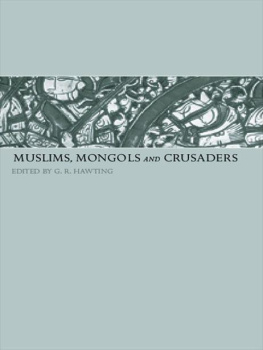First published in 1920 by George Routledge & Sons, Ltd. and E. P. Dutton & Co.
This edition first published in 2019 by Routledge
2 Park Square, Milton Park, Abingdon, Oxon, OX14 4RN
and by Routledge
52 Vanderbilt Avenue, New York, NY 10017
Routledge is an imprint of the Taylor & Francis Group, an informa business
1920 by Taylor & Francis
All rights reserved. No part of this book may be reprinted or reproduced or utilised in any form or by any electronic, mechanical, or other means, now known or hereafter invented, including photocopying and recording, or in any information storage or retrieval system, without permission in writing from the publishers.
Publishers Note
The publisher has gone to great lengths to ensure the quality of this reprint but points out that some imperfections in the original copies may be apparent.
Disclaimer
The publisher has made every effort to trace copyright holders and welcomes correspondence from those they have been unable to contact.
A Library of Congress record exists under ISBN:
ISBN 13: 978-0-367-25825-2 (hbk)
ISBN 13: 978-0-429-29013-8 (ebk)
THE MODERN CRUSADERS
THE 231st Infantry Brigade, with which this diary is chiefly concerned, came into existence in January, 1917, at a time when its component parts were engaged in the campaign against the Senussi, distributed in the Western Desert of Egypt and the Oases, from Sollum to Dakhla.
Its regiments had previously formed two Brigades of Yeomanry, the South Wales Mounted Brigade and the Welsh Border Mounted Brigade, both of which latter had been dismounted in England in November, 1915. In March, 1916, the regiments of these two Brigades were united in the 4th Dismounted Brigade and sent to Egypt, where they were employed on the Western frontier.
In January, 1917, the 74th (Yeomanry) Division was formed in Egypt, under the command of Major-General E. S. Girdwood, C.B., from the several brigades of dismounted Yeomanry, and the 4th Dismounted Brigade, with its six Yeomanry regiments amalgamated into four infantry battalions, took its place in the Division as the 231st Infantry Brigade.
The only unit of the new Infantry Brigade that had not formed part of the two Yeomanry Brigades was the Welsh Horse, which regiment had been raised by Lieut.-Colonel Lord Kensington, D.S.O., on the outbreak of war and had served under him on Gallipoli.
In February the Brigade moved to Helmieh, a few miles north of Cairo, where the final details of organisation and equipment were completed. All available time was devoted to infantry training and in gaining cohesion between the amalgamated regiments.
Finally, the Brigade was inspected by the Commander-in-Chief, Sir Archibald Murray, and shortly afterwards left for the Eastern front, where it arrived a few days after the first battle of Gaza.
Preparations were in full swing for the second attack, and, though the Division was destined to lend no more than its moral support to the action, the period of preparation between April 6th, when the Division was finally concentrated at Khan Yunus and Belah, and April 19th, when the battle took place, was one of the hardest that it ever passed through.
In addition to the multitudinous and detailed orders issued preparatory to a general engagement, which kept all ranks busy from morning to night, officers and men were strange to each other and strange to infantry organisation.
The 74th Division was in general reserve to the attack on the 19th, generally known as the second battle of Gaza, an attack that failed through lack of numbers at almost every point. Early on the 20th it was ordered to attack Ali Muntar, the key to the enemys position, which had withstood all assaults on the previous day. However, to the honest disappointment of the Division, the order was cancelled before it could be put into execution, as it was realised that to throw the only reserve into an already unsuccessful battle would merely add to the heavy casualties that had been sustained, without the possibility of exploiting any success that might be gained.
The action was broken off, and was followed by a period of strenuous entrenching against the expected Turkish counter-offensive, which in point of fact never materialised.
From this time onward the months passed monotonously and with little excitement. The Brigade spent seven weeks in the trenches on Mansura Ridge troubled only by the heat and flies, interspersed with desultory shelling.
Sir Edmund Allenby superseded the late Commander-in-Chief in June, and new life was infused into the Expeditionary Force. The garrisons of the front line were thinned out and the trenches largely gave place to detached works. Many troops were thus freed, amongst them the 231st Brigade, which found itself early in July at Regents Park on the coast, where the splendid bathing rapidly cured the septic sores with which officers and men were infested.
Training then became the order of the day, open order work with no hint of trench duties. This continued right up to the opening phases of the attack at the end of October, and, by the time it was called upon to take part in the operations that led to the fall of Gaza and the capture of Jerusalem, the Division had found itself and was ready to face any eventuality. The men were in splendid condition and eager for action, the officers full of confidence, and the Staffs working smoothly together. In short, the Division was a fit part of as fine an army as was ever trained for open warfare.
The diary opens on October 1st, 1917, when the preparations for the simultaneous attacks on Beersheba and Gaza were nearing completion.
Brigadier-General C. E. Heathcote, C.M.G., D.S.O., commanding.
Captain R. E. C. Adams, M.C., the East Surrey Regiment, Brigade-Major.
Captain Lord Victor Paget, M.C., R.H.G., Staff-Captain.
Captain R. A. Ellis, Montgomery Yeomanry, Intelligence Officer.
Captain R. V. Wilbraham, M.C., Cheshire Yeomanry, Signalling Officer.
24th (Denbigh Yeomanry) Battalion the R.W.F.
Lieut.-Colonel H. N. M. Clegg.
25th (Montgomery Yeomanry and Welsh Horse) Battalion the R.W.F.
Lieut.-Colonel Lord Kensington, D.S.O., Welsh Horse.
24th (Pembroke and Glamorgan Yeomanry) Battalion the Welsh Regiment.
Lieut.-Colonel C. J. H. Spence-Jones, D.S.O., Pembroke Yeomanry.
10th (Shropshire and Cheshire Yeomanry) Battalion the K.S.L.I.
Lieut.-Colonel H. Heywood-Lonsdale, D.S.O., Shropshire Yeomanry.
210th Machine-Gun Company.
Major G. Egerton Warburton, D S.O., Cheshire Yeomanry.













